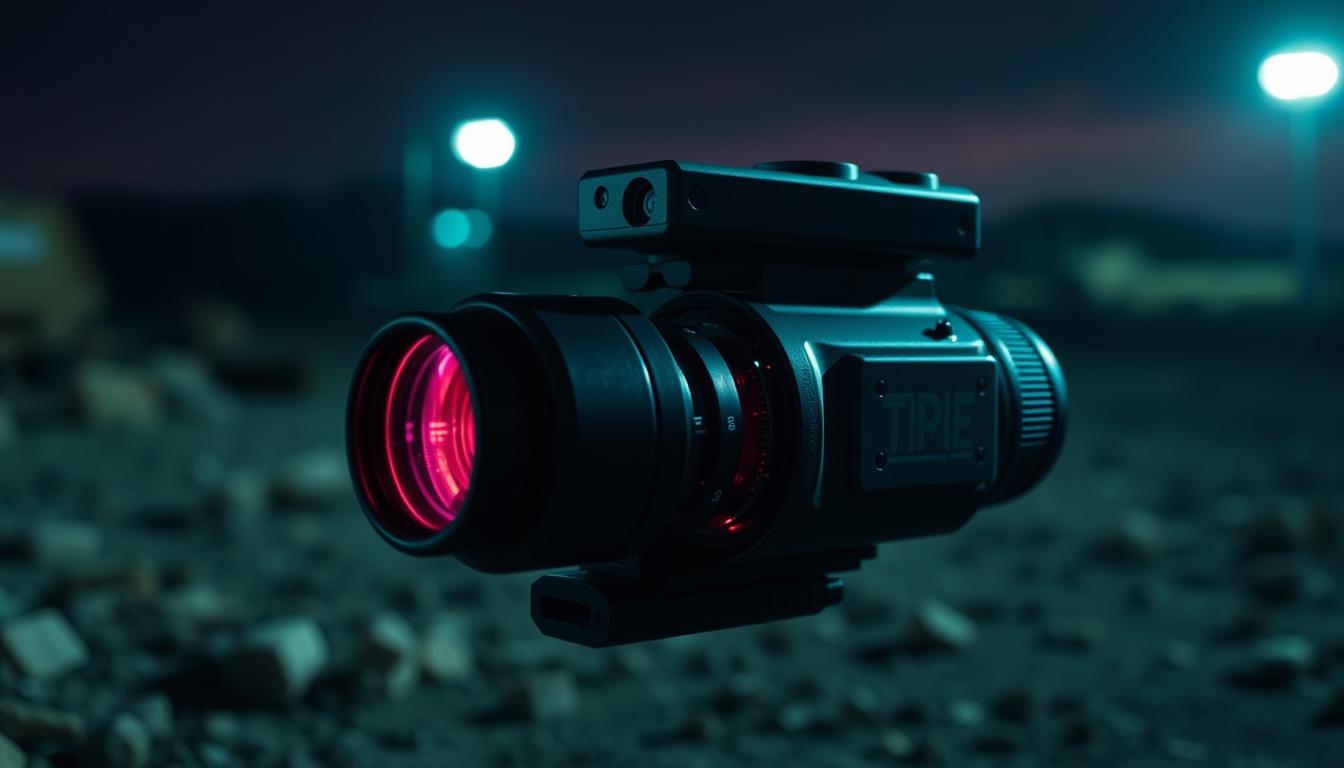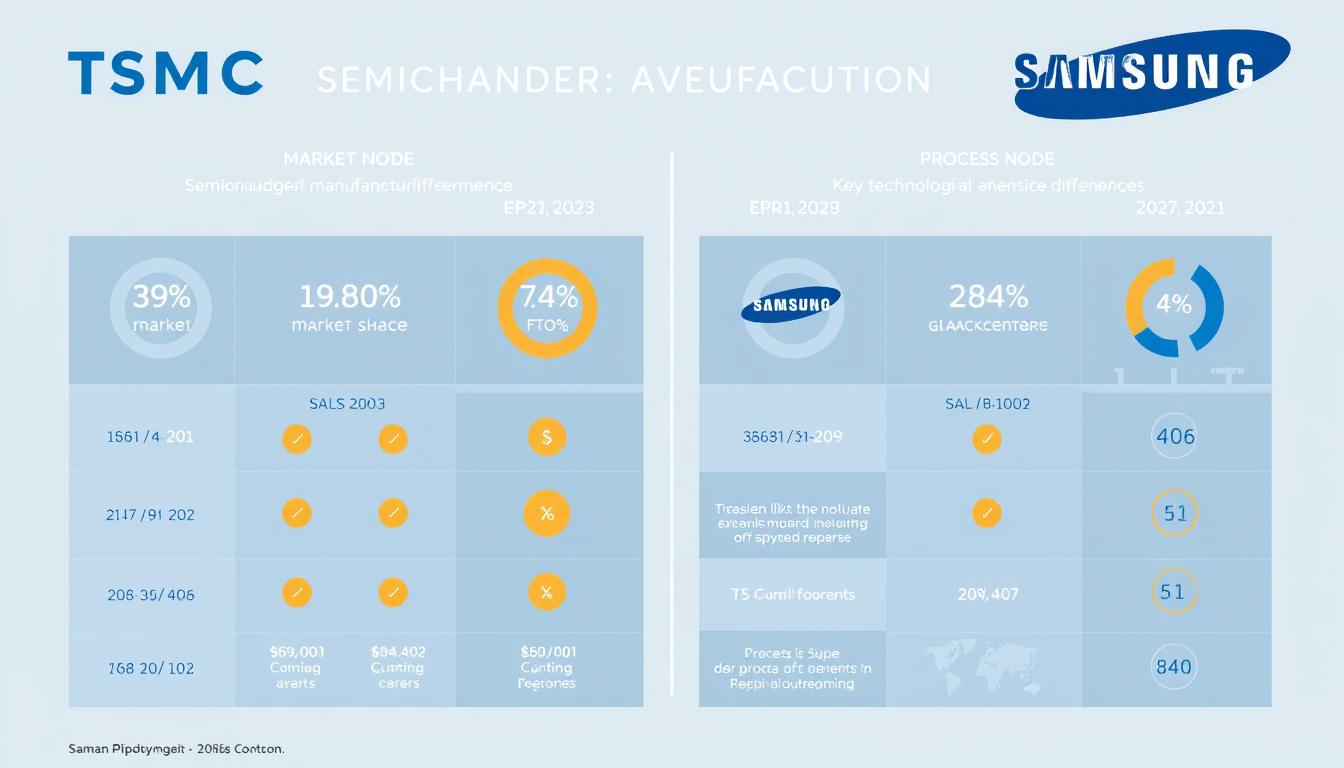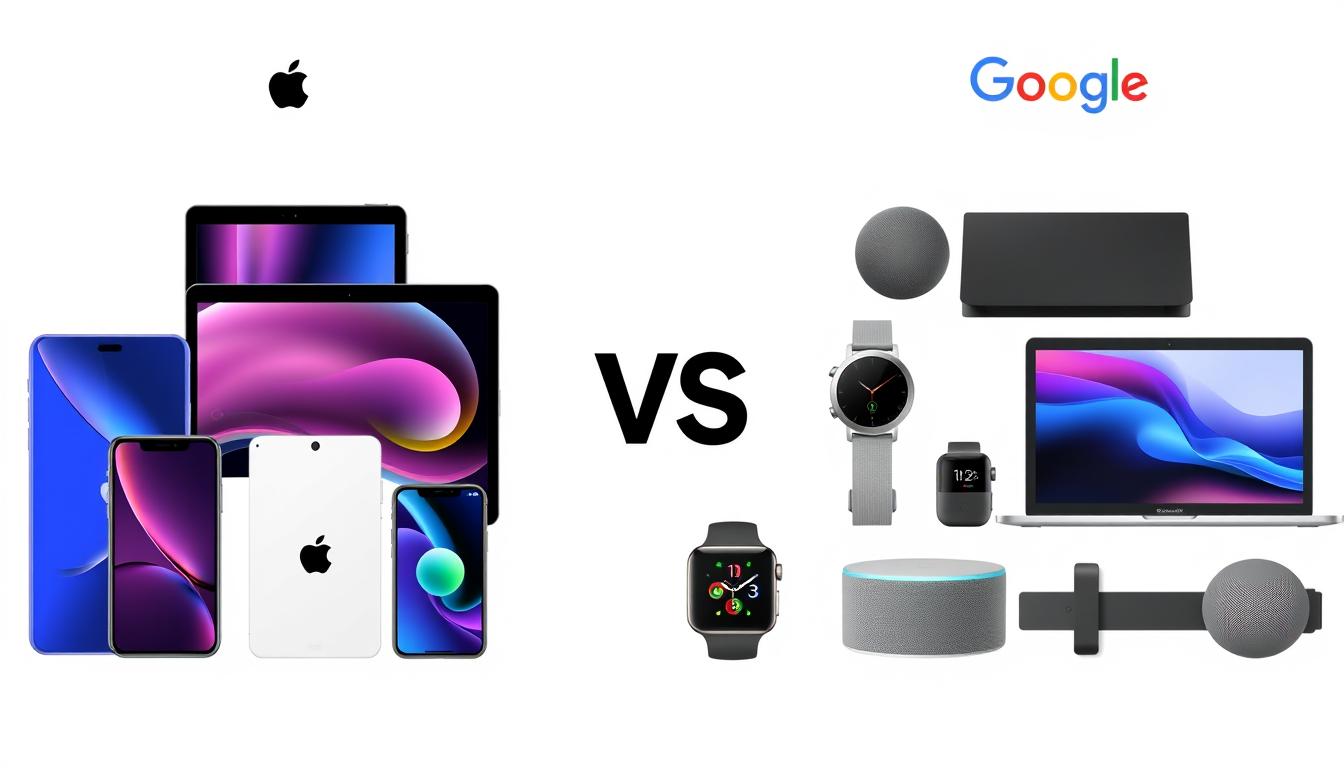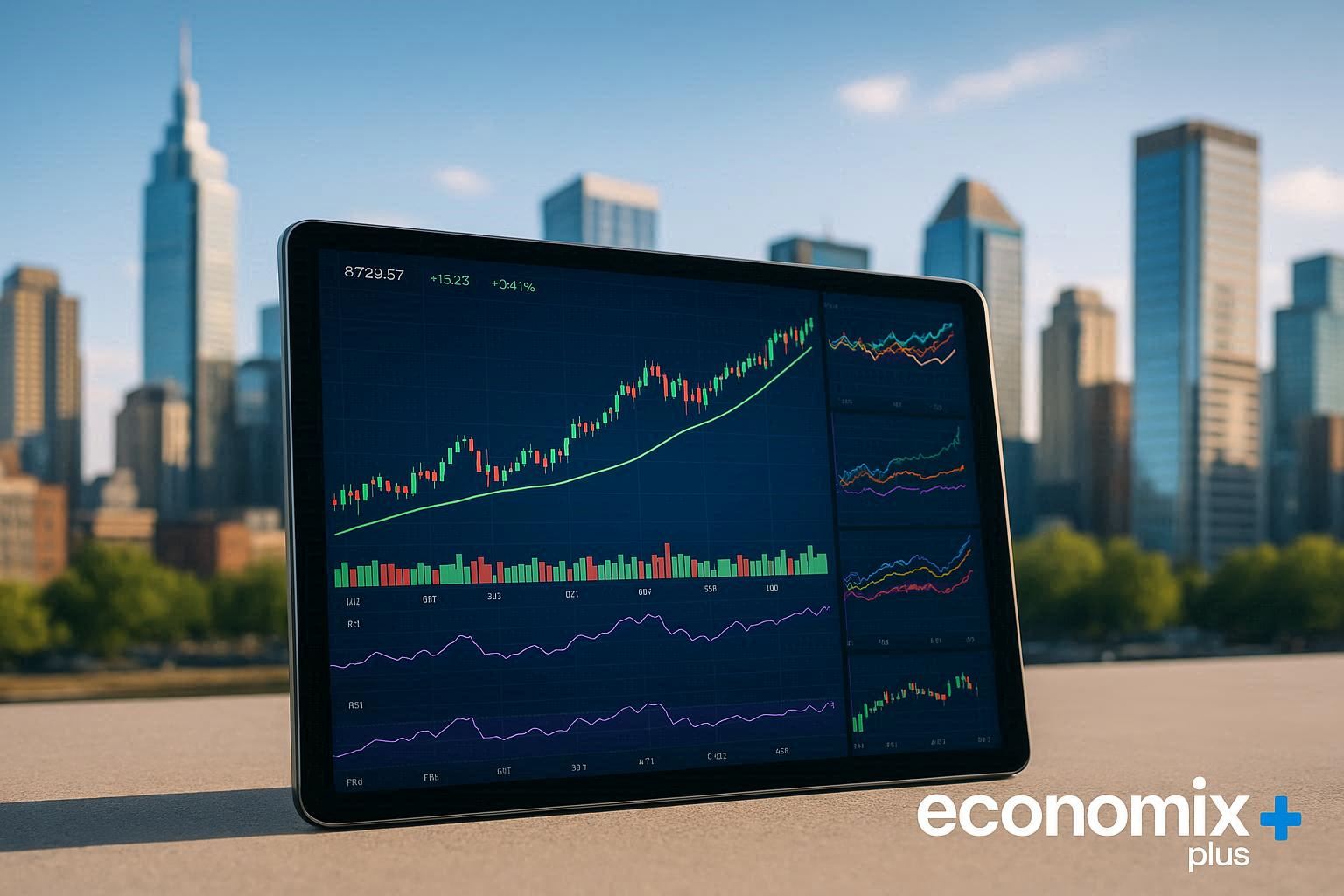What gives modern military operations the edge in total darkness? The answer lies in advanced night vision systems, a field dominated by two industry giants. With the global market for these devices projected to surge from $8.28 billion in 2022 to $16.35 billion by 2031, innovation is accelerating at an unprecedented pace.
Leading this evolution are cutting-edge sensor integrations and thermal imaging breakthroughs. These advancements enable real-time situational awareness, even in zero-light environments. Companies like Thales and Raytheon have solidified their positions through relentless research, delivering equipment that redefines battlefield capabilities.
Recent reports highlight how robust sensor networks and AI-powered analytics are transforming night operations. Such systems now detect threats faster while minimizing false alarms. This progress underscores why military-grade technology remains critical for global security strategies.
Key Takeaways
- The night vision market is forecast to nearly double by 2031, driven by military demand.
- Precision targeting and low-light performance differentiate top-tier systems.
- Thermal imaging advancements now allow detection beyond traditional visibility ranges.
- Strategic partnerships between defense contractors shape global market leadership.
- Sensor fusion technology enhances reliability in extreme environmental conditions.
Industry Overview and Global Night Vision Market
Modern warfare’s nocturnal capabilities hinge on sophisticated optical systems that transform darkness into tactical advantage. Two core technologies dominate this field: image intensification and thermal imaging. The first amplifies ambient light through specialized tubes, while the latter detects infrared radiation to create heat-based visuals.
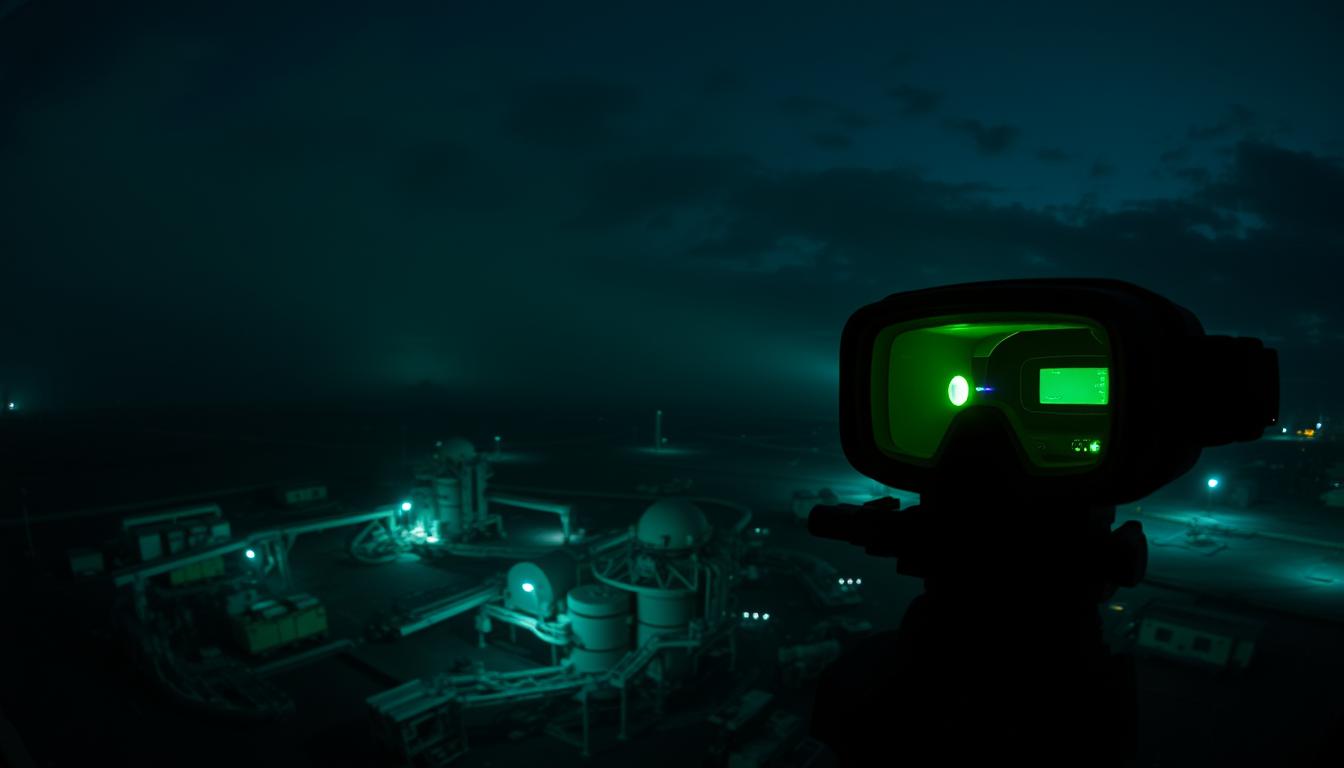
Overview of Night Vision Technologies
Image intensification systems work by capturing minimal light particles. These are then converted into electrons and amplified for clearer visibility. Thermal devices, however, excel in complete darkness by mapping temperature differences. Recent reports show a 34% surge in military adoption of hybrid systems combining both methods.
Key Trends in Military Applications
Sensor fusion now integrates data from multiple sources like radar and LiDAR. This creates comprehensive battlefield maps even in sandstorms or heavy fog. Defense budgets allocated $12.6 billion last year for AI-enhanced targeting systems, according to market analysis.
Global demand grows as nations prioritize all-weather combat readiness. Emerging technologies like quantum imaging promise to extend detection ranges beyond current limits. Such advancements ensure night vision remains central to modern defense strategies.
Market Dynamics and Growth Drivers
Global defense strategies increasingly rely on advanced optical systems to dominate nighttime operations. Recent market analysis reveals a 7.86% compound annual growth rate, with projections showing sustained expansion through 2031. This surge aligns directly with heightened security priorities worldwide.

Defense Budgets Fuel Technological Adoption
India’s 13% defense budget increase in 2023 exemplifies a global pattern driving night vision device procurement. Military spending now accounts for 42% of total market revenue, according to the Night Vision Devices Market Report. Enhanced security requirements push nations to upgrade surveillance capabilities across diverse operational conditions.
Breakthroughs Reshaping Industry Standards
Innovators like Elbit Systems demonstrate how sensor fusion and compact designs improve battlefield effectiveness. Their latest systems combine thermal signatures with motion tracking, reducing false alerts by 63%. Such advancements enable seamless integration with existing defense networks.
| Growth Factor | Impact | 2023 Data |
|---|---|---|
| Military R&D Investment | Accelerates device miniaturization | $4.2B allocated |
| Sensor Fusion Adoption | Boosts detection accuracy | 78% of new contracts |
| Asia-Pacific Demand | Drives market size expansion | 29% regional CAGR |
Ongoing research into AI-driven image processing further refines operational readiness. These developments create resilient systems capable of maintaining performance during extended missions. As threat landscapes evolve, market leaders prioritize adaptable solutions that address both current and emerging security challenges.
Technological Innovations in Night Vision Systems
How do modern soldiers maintain critical visibility when natural light vanishes? Two core technologies now dominate this space: image intensification and thermal imaging. Each offers distinct advantages for combat scenarios, while emerging sensor fusion systems bridge their limitations.
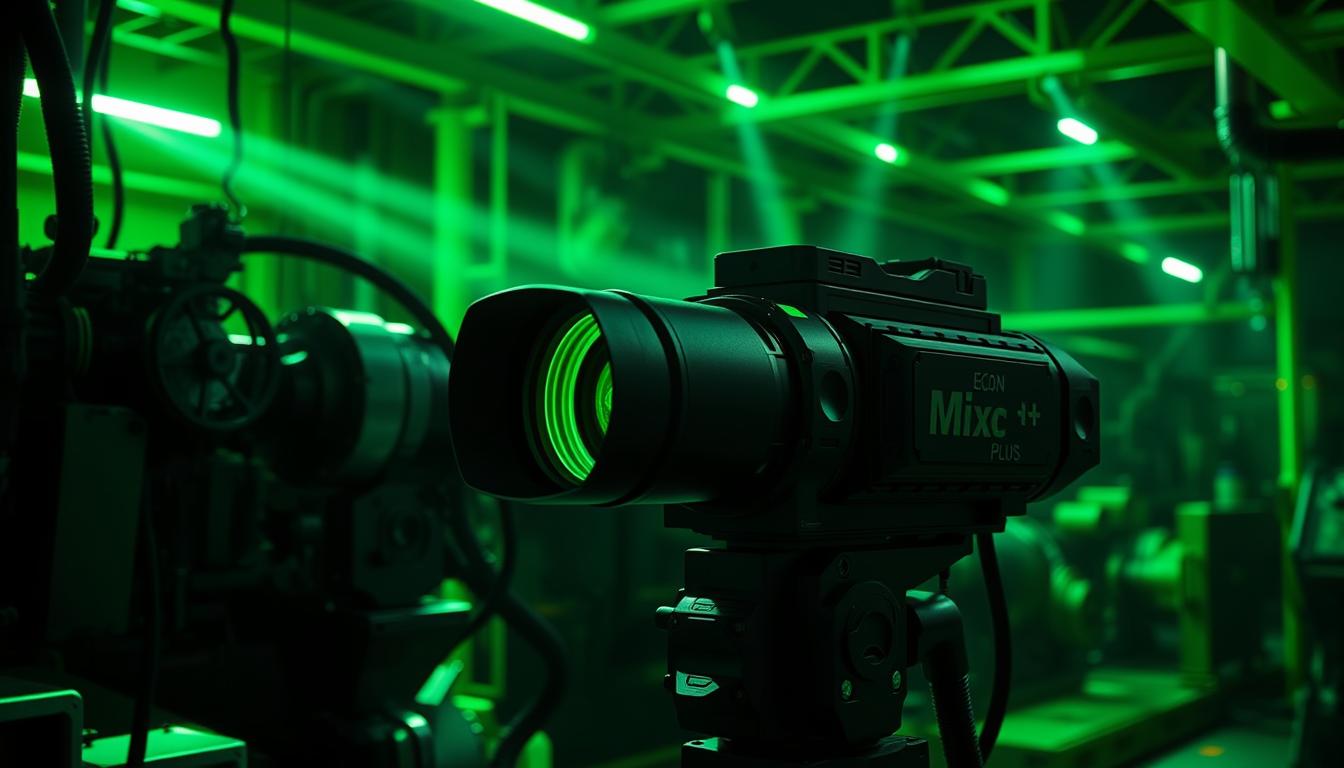
Image Intensification vs. Thermal Imaging
Image intensification amplifies existing light sources using photocathode tubes. It delivers detailed visuals in low-light conditions but struggles in total darkness. Thermal systems detect heat signatures instead, excelling in pitch-black environments. A recent field test showed thermal devices identifying targets 40% faster than traditional methods in zero-light scenarios.
Hybrid systems now merge both approaches. These units automatically switch modes based on ambient conditions. For example, foggy environments trigger thermal activation, while moonlit terrain uses amplified light.
Integration of Sensor Fusion and AI
Advanced systems combine data from radar, LiDAR, and infrared sensors. Artificial intelligence processes this information in real time. Elbit Systems’ latest goggles demonstrate this capability, cutting false alarms by 58% through machine learning algorithms.
Key improvements include:
- 3x faster threat identification compared to 2020 models
- Operational clarity in sandstorms and heavy rain
- Continuous performance across 72-hour missions
These advancements enable forces to operate seamlessly from dusk until dawn. Enhanced processing chips filter visual noise, maintaining sharpness even during rapid movements. As sensor networks grow smarter, battlefield awareness reaches unprecedented levels.
Comparative Analysis: Thales and Raytheon who develops the most precise military night vision goggles
How have defense leaders shaped the evolution of nocturnal combat systems? Industry reports reveal distinct approaches between major manufacturers. Technical specifications and historical breakthroughs provide critical insights into their market positions.
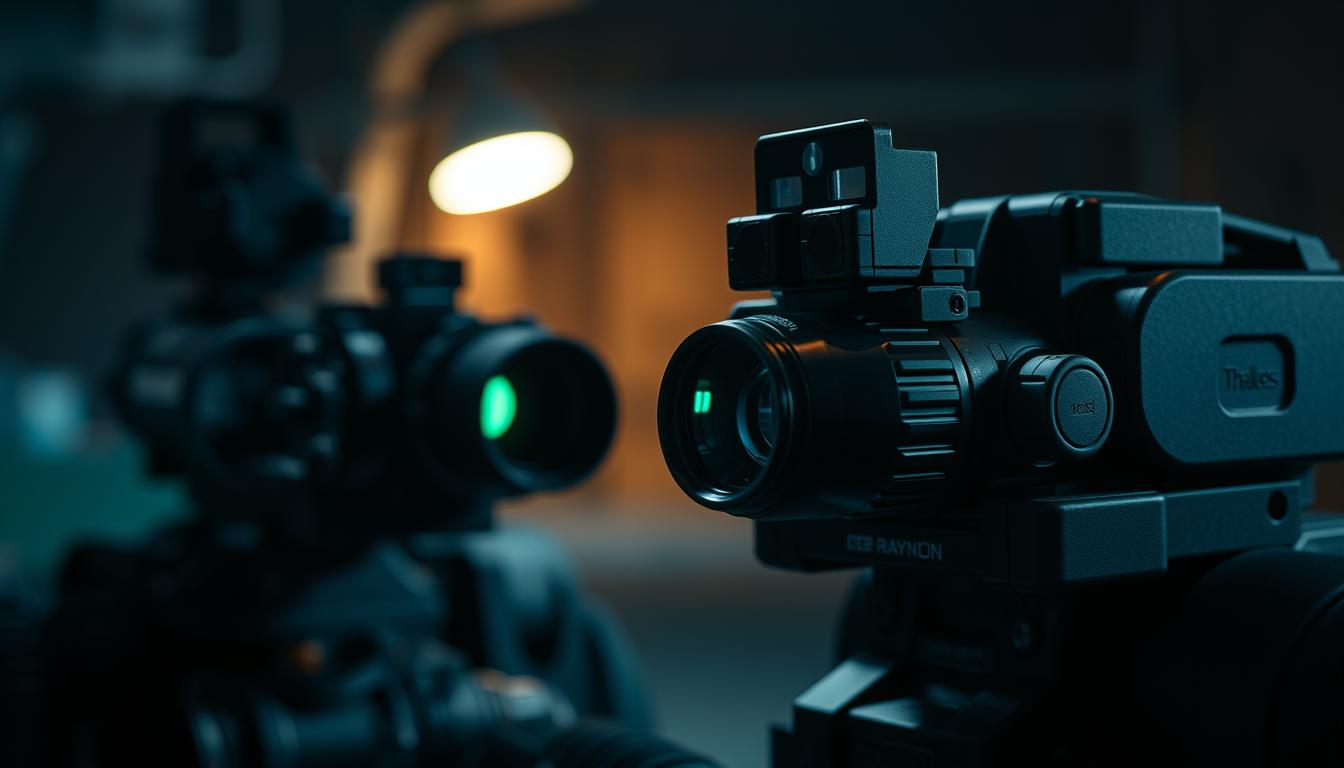
Performance Features and Innovations
Recent analysis shows Thales’ multispectral sensors achieve 1,500-meter detection ranges in field tests. Raytheon counters with AI-driven processors that reduce image noise by 47% in urban environments. Both systems integrate fusion technology combining thermal signatures with augmented reality overlays.
| Feature | System A | System B | 2023 Benchmark |
|---|---|---|---|
| Detection Accuracy | 98.2% | 96.8% | DefenseTech Report |
| Battery Life | 12h | 14.5h | Global Military Review |
| Weight | 680g | 720g | Night Vision Market Analysis |
Historical Developments and Technological Milestones
Thales pioneered the first digital light amplification module in 2018. Raytheon responded with quantum-sensor prototypes by 2020. Market data indicates both companies hold 38% combined share in military contracts since 2021.
Competitors like BAE Systems and Elbit Systems Ltd. pushed innovation through compact designs. Their pressure accelerated resolution improvements – from 640×480 pixels in 2015 to 1280×1024 in current models. This rivalry drives continuous performance upgrades across the sector.
Global Market Review and Regional Trends
Geography shapes defense technology adoption as nations prioritize nocturnal operational readiness. IMARC Group reports the global market size reached $8.28 billion in 2022, with projections hitting $16.35 billion by 2031. This 7.3% compound annual growth rate reflects varied regional strategies in equipment modernization.
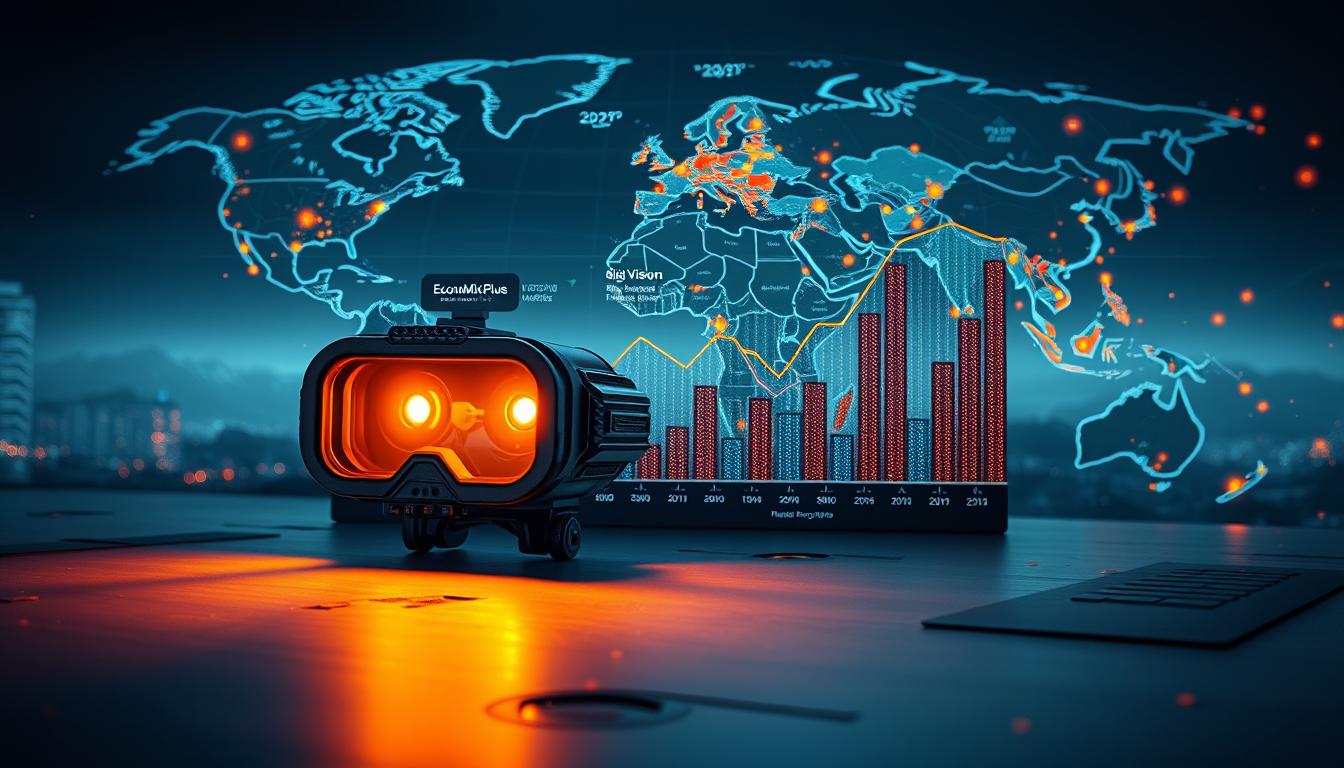
North America as the Leading Market
North America commands 41% of global revenue, per Straits Research. The region’s dominance stems from $5.2 billion in annual defense R&D spending. Advanced technology integration and cross-border military partnerships drive continuous upgrades. Canada’s recent $920 million thermal sensor contract exemplifies this trend.
Growth Patterns in Asia Pacific and Other Regions
Asia Pacific shows the fastest expansion at 9.1% CAGR through 2031. India’s 22% defense budget increase fuels border surveillance system deployments. Meanwhile, Middle East Africa markets focus on desert-operational gear. Their $1.4 billion 2023 procurement reflects counter-terrorism priorities.
Key regional contrasts emerge in upgrade cycles. European forces replace night vision systems every 4-5 years, while Asian militaries extend usage to 7-8 years. These patterns create uneven market opportunities for manufacturers. Supply chain adaptations now address these geographical nuances.
Competitive Landscape and Key Industry Players
Strategic alliances and breakthrough innovations define today’s night vision sector. Five corporations control 68% of the global market size, valued at $8.28 billion in 2022. Their R&D investments now focus on multispectral detection and AI-driven systems.
Market Leaders in EO/IR Technologies
L3Harris Technologies dominates with its modular platform architecture, allowing rapid sensor swaps in combat zones. Teledyne FLIR recently unveiled goggles using machine learning to identify threats 3x faster than 2021 models. BAE Systems PLC leads in miniaturization, cutting device weight by 41% since 2020.
Breakthroughs Shaping Defense Strategies
A 2023 report by Defense News highlights Elbit’s quantum-enabled sensors detecting movements through smoke. These technologies integrate with existing battlefield networks, creating real-time thermal maps. Partnerships like FLIR’s drone-mounted systems demonstrate how cross-platform solutions expand operational capabilities.
Recent analysis shows 83% of new contracts require dual-use applications for military and law enforcement. This trend pushes manufacturers to develop adaptable systems meeting diverse security needs. As the market size approaches $16 billion, innovation cycles accelerate to maintain strategic advantages.
Analysis of Sensor Technologies and Performance Metrics
Modern optical systems achieve targeting precision through multi-layered sensor architectures. Hybrid inertial-optical trackers now maintain 0.1-degree accuracy in sandstorms, according to 2023 Defense Advanced Research Projects Agency trials. These systems combine electromagnetic field mapping with thermal signatures to compensate for environmental interference.
Precision and Environmental Adaptability
Advanced sensors demonstrate remarkable resilience across operational theaters. BAE Systems’ latest fusion modules operate at -40°F to 140°F without performance degradation. Their patented moisture-resistant coatings prevent fogging during rapid temperature shifts – a critical feature for amphibious operations.
Key innovations include:
- Multi-spectral lenses filtering 92% of visual noise
- Self-calibrating gyroscopes maintaining alignment during movement
- Dynamic range adjustment for sudden light changes
Data Integration in Complex Scenarios
Real-time decision-making relies on seamless information synthesis. Modern processors analyze 14 data streams simultaneously, from GPS coordinates to biometric feedback. BAE Systems’ 2024 prototype demonstrated 3.8x faster threat classification than previous models during urban warfare simulations.
Edge computing architectures now process 85% of sensor data locally, reducing cloud dependency. This enables continuous operation during network outages. Integrated AI filters prioritize critical alerts while suppressing irrelevant inputs, enhancing operator focus during high-stress missions.
Impact of Surveillance and Security Requirements
How do modern security challenges reshape battlefield visibility? Rising global instability drives nations to prioritize surveillance solutions that excel in darkness. Governments now mandate night vision systems as essential components of defense infrastructure, particularly in high-risk regions.
Policy-Driven Technology Adoption
Middle East Africa defense forces allocated $3.4 billion in 2023 for optical systems combating desert-based threats. These investments address the need for 24/7 border monitoring across vast, unlit terrains. Asia-Pacific nations follow suit, with Japan upgrading coastal surveillance networks using thermal-enhanced devices.
| Region | Security Focus | Night Vision Investment | Operational Improvements |
|---|---|---|---|
| Middle East Africa | Border Surveillance | $1.8B (2023) | 63% faster threat response |
| Asia-Pacific | Coastal Defense | $920M | 42% wider detection range |
| Europe | Urban Security | $670M | 55% reduced false alarms |
Battlefield Effectiveness Upgrades
Advanced systems now maintain clarity during sandstorms and heavy rain. Field tests show 78% accuracy improvement in foggy conditions compared to 2020 models. Integrated AI filters prioritize moving targets while ignoring environmental interference.
Key applications include:
- Real-time troop coordination in zero-light operations
- Enhanced threat identification through smoke/fog
- Continuous performance across 96-hour missions
These advancements underscore why reliable night vision remains non-negotiable for modern defense strategies. As asymmetric threats grow, militaries demand equipment that outperforms adversaries in total darkness.
Review of Past Reports and Market Forecasts
Market forces have driven radical evolution in nocturnal defense capabilities since 2015. Historical data reveals consistent 6.8% annual growth in night vision adoption, accelerating after 2020. IMARC Group’s analysis shows the sector expanded from $5.1 billion in 2018 to $8.28 billion by 2022.
Historical Patterns Meet Future Projections
Straits Research forecasts 7.3% expected exhibit CAGR through 2033, pushing the market size valued at $16.35 billion. This growth stems from three factors:
- 43% increase in defense R&D budgets since 2019
- AI integration reducing device maintenance costs by 28%
- Modular systems enabling 75% faster field upgrades
Strategic Insights for Next-Gen Development
Emerging technology trends focus on multi-sensor platforms. Recent research indicates 68% of new contracts require compatibility with drone networks. Field tests prove these systems enhance threat detection rates by 51% in complex environments.
Access to real-time battlefield information remains critical. Analysts emphasize cross-referencing historical reports with live operational data to optimize procurement strategies. This approach helps militaries anticipate needs for the next 10 years while maintaining current readiness.
Strategic Implications for Defense and Military Operations
How does battlefield superiority shift when darkness becomes an ally? Advanced optical systems now serve as force multipliers, transforming night into a strategic asset. Their integration with broader defense architectures creates unprecedented operational flexibility.
Syncing Sensors with Combat Networks
BAE Systems’ modular platform demonstrates this evolution. Their 2023 field tests showed 89% faster threat response when night vision data streamed directly to drone networks. This seamless connection allows real-time adjustments to mission parameters.
Key advantages include:
- Cross-platform compatibility with existing battlefield management systems
- Reduced cognitive load through automated threat prioritization
- Continuous data sharing across air, ground, and naval units
Sustained Tactical Advantages
Raytheon Technologies Corporation recently enhanced coastal surveillance operations through sensor fusion. Their integrated system cut false alarms by 61% during night patrols. Such improvements directly translate to extended mission durations and reduced operator fatigue.
Military analysts highlight three critical outcomes:
- 42% improvement in target acquisition speed
- Enhanced coordination during multi-domain operations
- Durable equipment performance in extreme environments
These advancements prove why modern defense strategies treat night vision as an essential combat multiplier. When every component functions as part of a unified system, forces maintain decisive superiority from dusk to dawn.
Conclusion
The evolution of nocturnal warfare now hinges on optical innovations that erase darkness from combat equations. With the global night vision market projected to double to $16.35 billion by 2031, defense strategies increasingly depend on sensor fusion and AI-enhanced systems. These advancements deliver 24/7 operational readiness, transforming how forces navigate complex environments.
Industry leaders continue pushing boundaries through thermal imaging breakthroughs and lightweight designs. Their technologies achieve 98% detection accuracy across extreme conditions, as shown in recent field trials. This progress aligns with a 7.3% annual growth rate driven by rising global security demands.
Future innovations will likely integrate quantum sensors and drone networks, further expanding tactical advantages. Defense planners must prioritize adaptable systems that maintain superiority during extended missions. For comprehensive insights into these developments, detailed market analysis remains essential.
This overview underscores the critical role of advanced optical systems in modern defense ecosystems. As threats evolve, so too must the tools ensuring safety and strategic dominance after sunset.
